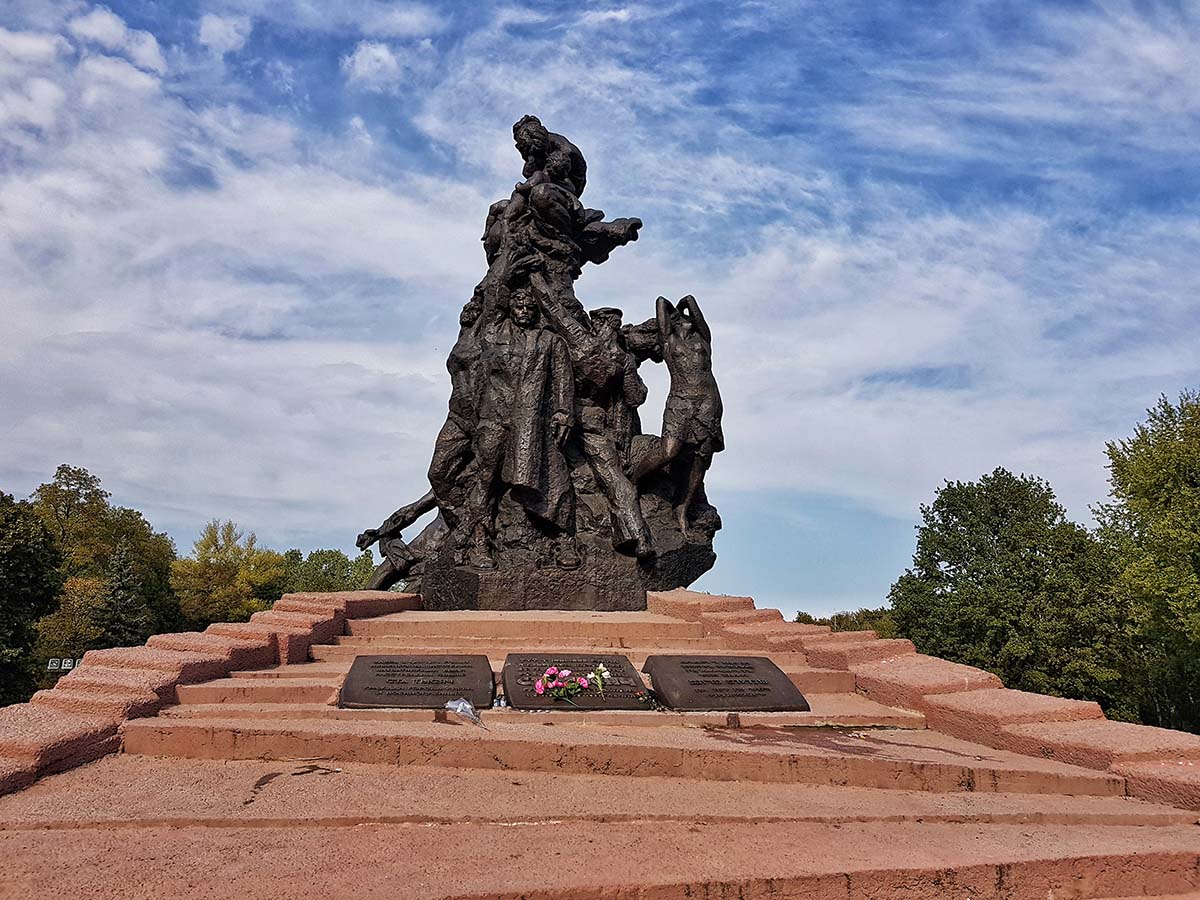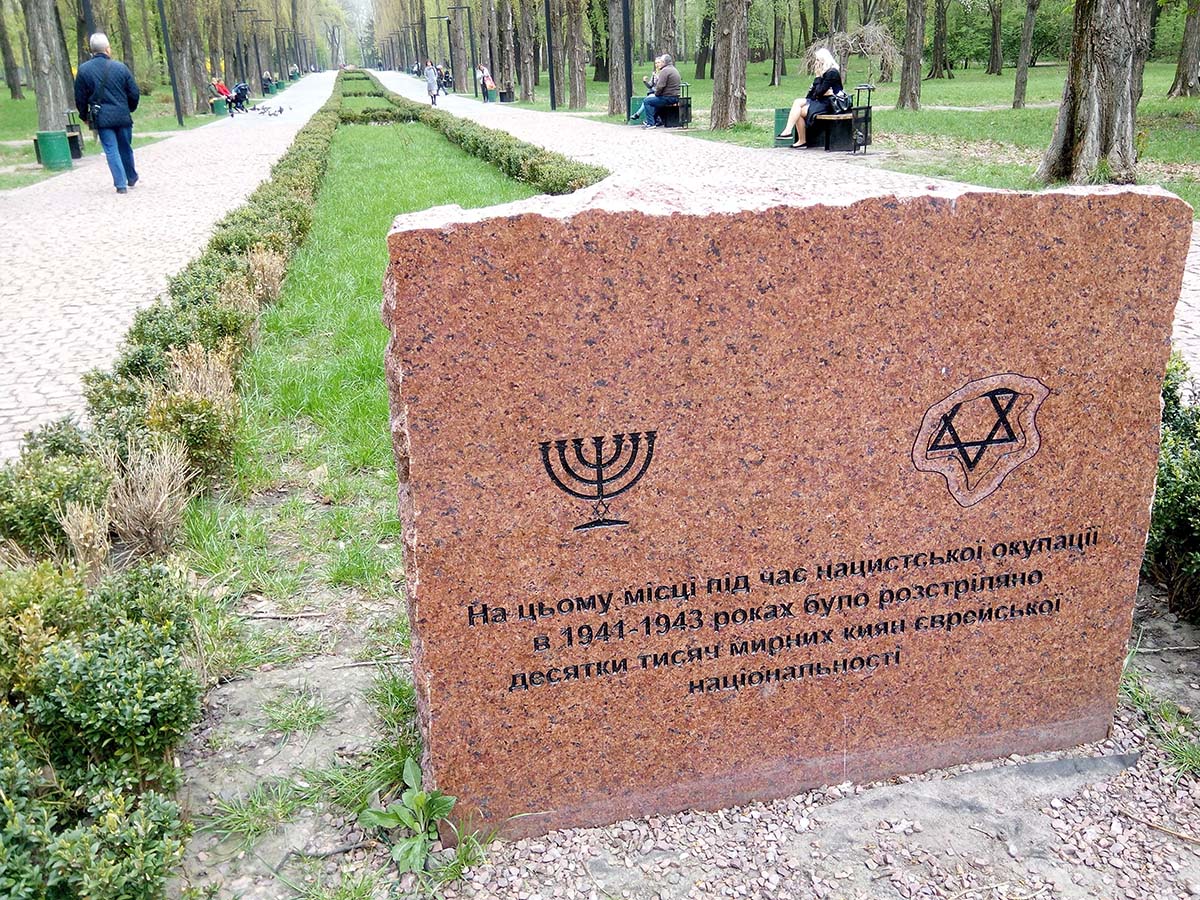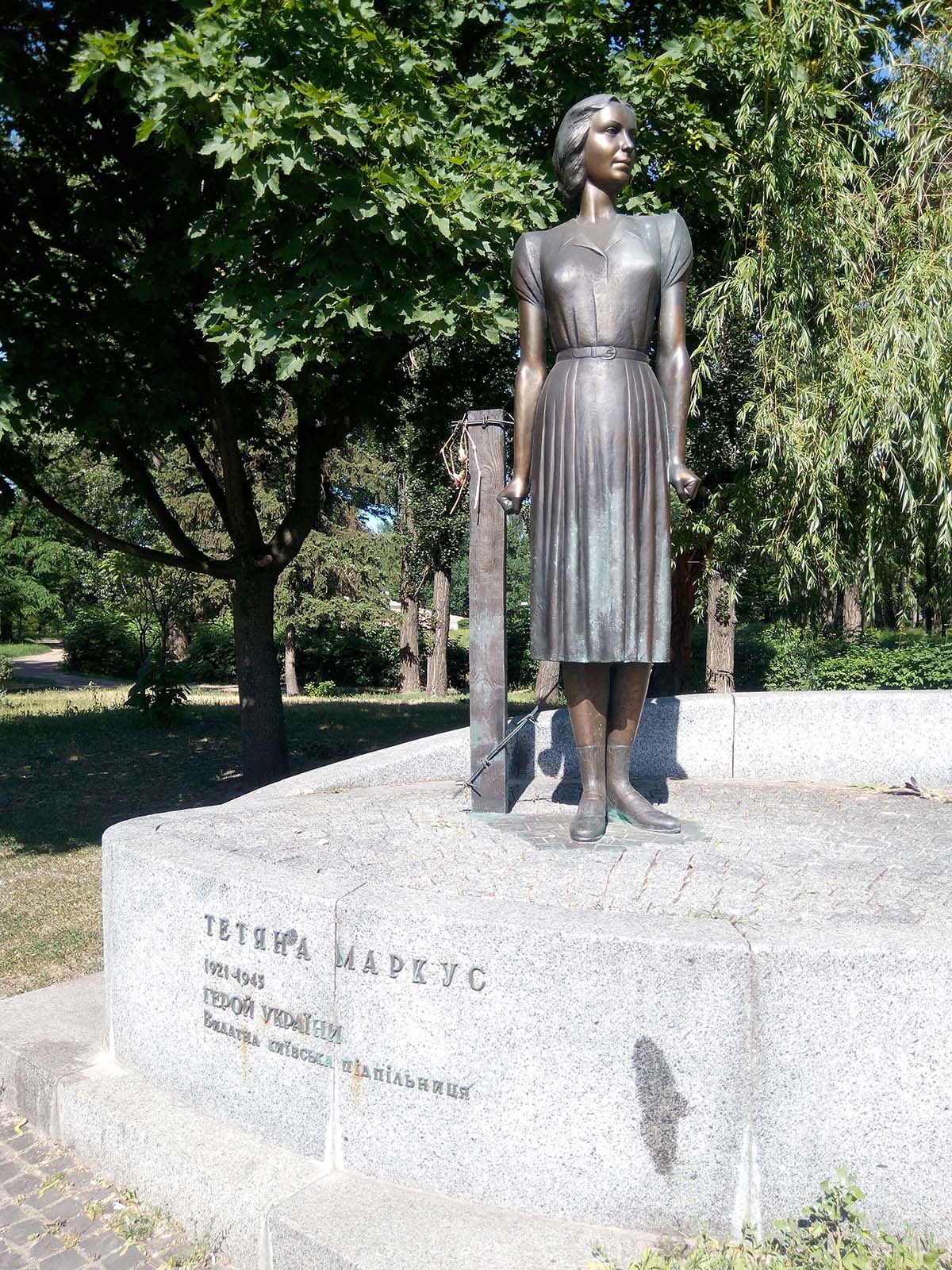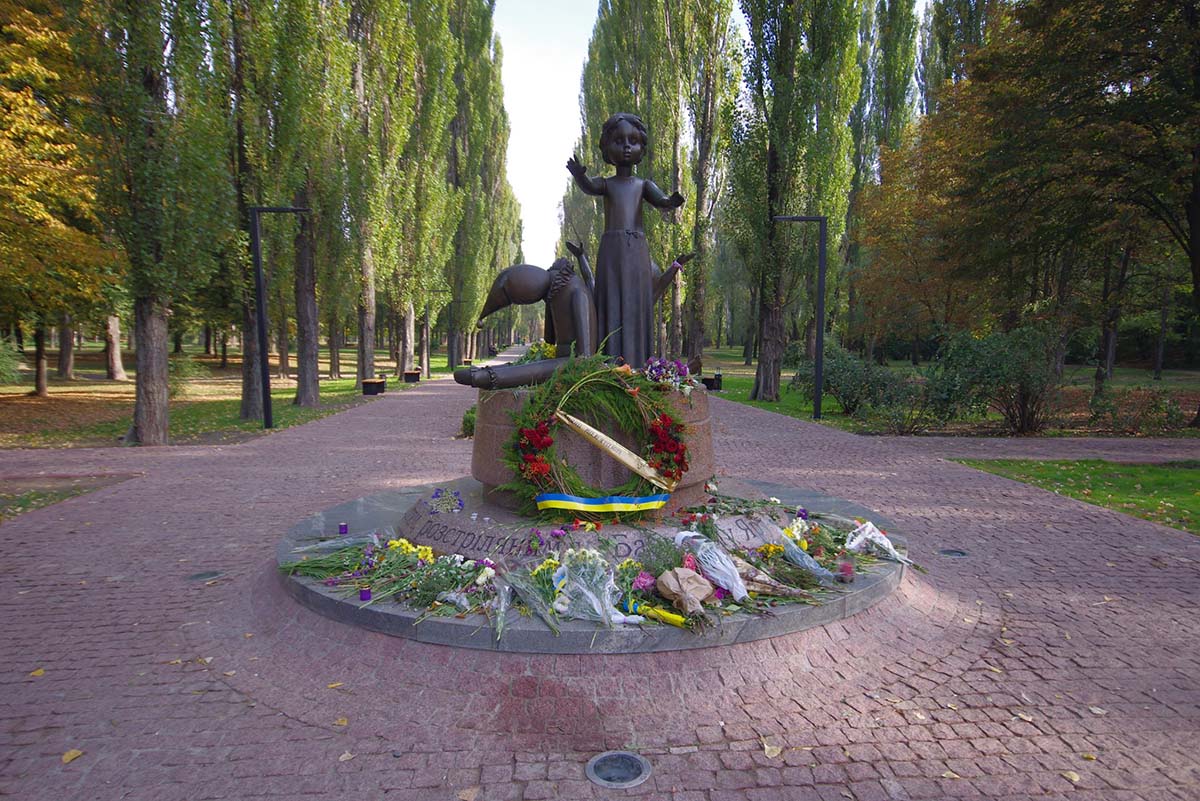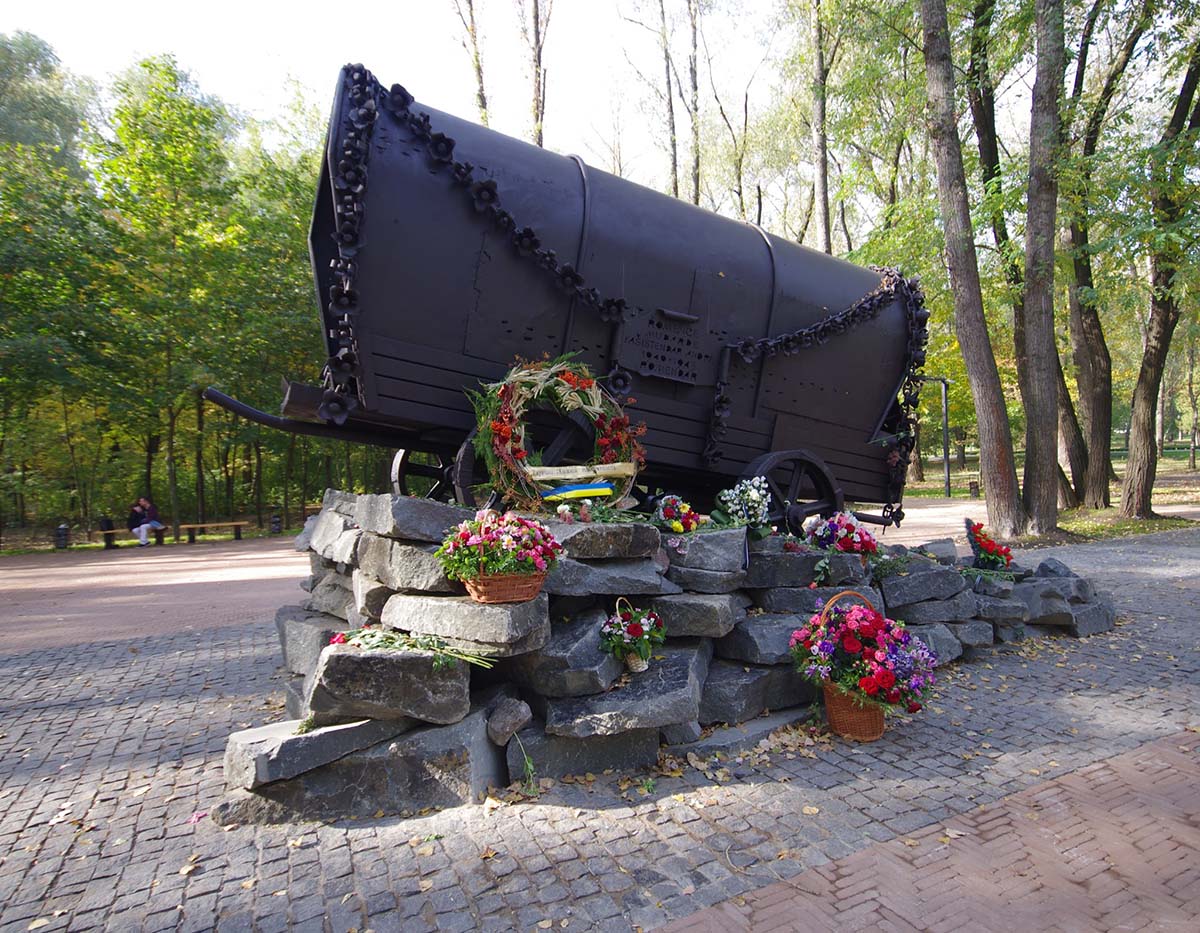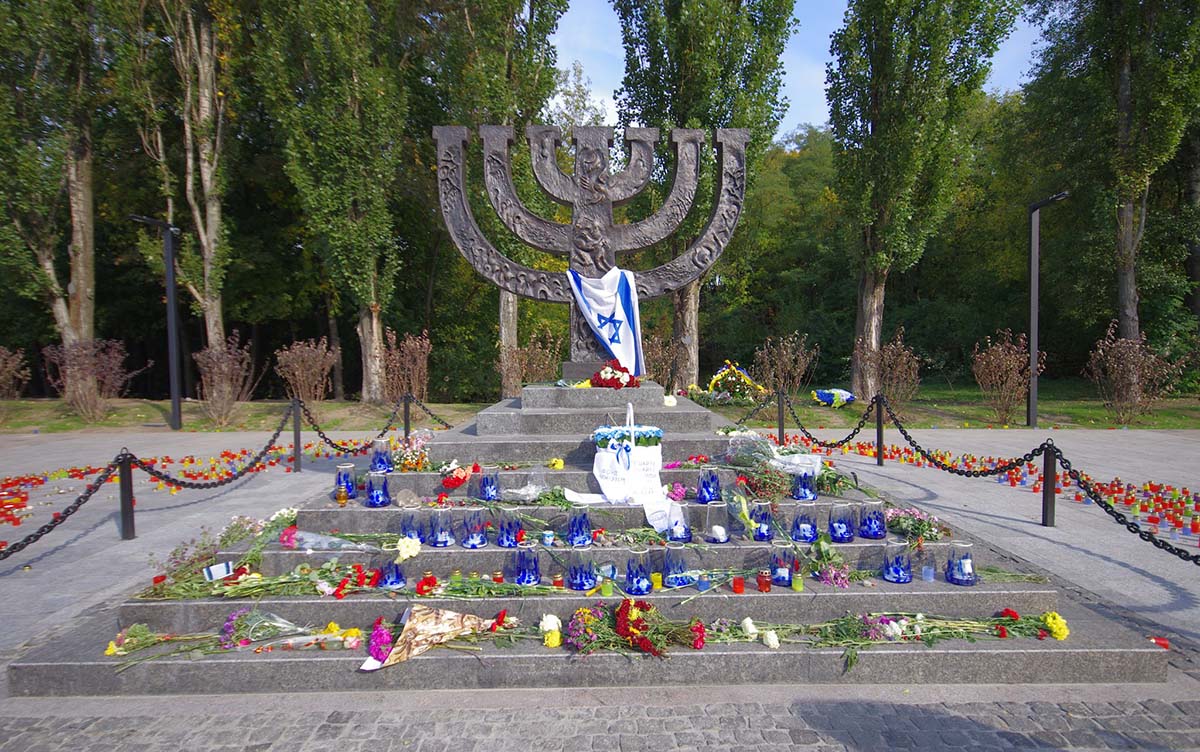Babi Yar is a tract in the northwestern part of Kiev, which gained sad worldwide fame as a place of mass executions of civilians, mainly Jews, Gypsies, Kiev Karaites, as well as Soviet prisoners of war, carried out by German occupation forces and Ukrainian collaborators during the Great Patriotic War. The first execution took place on September 27, 1941 – 752 patients of the Ivan Pavlov psychiatric hospital, which was located nearby, were shot. In September 1941, the Nazi authorities ordered that on September 29, the Jewish population of Kyiv should report to a designated collection point with documents and valuables by 8 a.m. Failure to comply with orders was punishable by execution. About 2,000 notices were posted around the city. At the same time, misinformation was spread through janitors and building managers about the intention to conduct a census and resettlement of Jews. Most of those who came were women, children and old people (the adult male population was drafted into the army); in addition to Jews, there were representatives of other nationalities from international families.
At the end of the street, a checkpoint was set up, behind which there was an office hidden from the side. One by one, 30-40 people were taken to the checkpoint, where their belongings were taken away and they were forced to undress. Then the police, using sticks, drove people into passages in the embankment on the edge of a ravine 20-25 meters deep. On the opposite edge there was a machine gunner. After the ditch was filled with 2-3 layers of corpses, they were sprinkled with earth on top. Since it was not possible to shoot all those who arrived in one day, the premises of military garages were used as a temporary holding point for those who arrived overnight. Over 2 days, about 34,000 people were shot (this figure does not include young children under 3 years old, who were also killed on these two days). The executions did not stop there and continued until the Germans left Kyiv. Babi Yar also became the site of the execution of 5 gypsy camps. The total number of killed, according to various estimates, ranges from 100,000 to 150,000 people.
Retreating from Kiev and trying to hide traces of war crimes, the Nazis partially destroyed the camp in August – September 1943, dug up and burned tens of thousands of corpses in open ovens in the neighboring Syretsky concentration camp, bones were ground on machines brought from Germany, the ashes were scattered around the outskirts of Babiye Yara. On the night of September 29, 1943, an uprising occurred in Babi Yar by 329 death row prisoners working at the furnaces, of which 18 people escaped, the remaining 311 were shot. The surviving prisoners witnessed the Nazis’ attempt to hide the fact of the mass execution. After the liberation of Kyiv by the Red Army on November 6, 1943, the Syretsky concentration camp (located a few hundred meters from Babyn Yar) was used as a camp for German prisoners of war until 1946. After this, the camp was demolished, and in its place in the late 1950s – early 1960s the Syrets residential area was built and laid out Syretsky Park. The history of Babyn Yar continued its tragic path, but in peacetime.
In the mid-1950s, Babi Yar was partially filled up and 2 roads were built through it. One of them, Melnikov Street, cut Babi Yar into two unequal parts – a large northern one and a small southern one. The southern part was turned into a square, part of which was later demolished for garages. The northern part of Babyn Yar was partially used for the construction of the Syrets residential area, partially for a sports complex and park Kirillovsky Gai. In the late 1950s, city authorities decided to flood Babi Yar with liquid waste from neighboring brick factories. The ravine was blocked with an earthen rampart to prevent flooding of residential areas. The parameters of the shaft and the throughput of the drainage system did not meet safety standards. On the morning of Monday, March 13, 1961, as a result of rapid snow melting, the shaft could not withstand the pressure of water, and the resulting mudflow up to 14 meters high rushed towards Kurenevka. An area of about 30 hectares was flooded with liquid pulp, over 80 buildings were destroyed, and the Podolsk tram depot was almost completely destroyed.
Information about the disaster was censored, its scale was downplayed – a common phenomenon in Soviet times. Many victims were buried in various cemeteries in Kyiv and beyond, with fictitious dates and causes of death indicated in the documents; some of the bodies remained unfound in the thickness of the hardened pulp. According to the official report of the government commission investigating the causes of the accident, “145 people died in the area of the accident.” According to modern researchers of the Kurenevka disaster, the real number of victims was about 1,500 people. At the same time, the Kirillovskoye cemetery, located in the Kirillovskaya Grove, a tree-covered area, was destroyed – part of Babyn Yar from its middle to the mouth, where Kirillovskaya Church is located. This man-made disaster became known as the Kurenev tragedy. After the disaster, work to fill the pit continued. Instead of an earthen dam, a concrete dam was built, a new drainage system was laid, and other safety measures were taken. Part of the pulp that splashed onto Kurenevka was transported back in a hardened form by dump trucks to backfill the ravine. Subsequently, a road from Syrts to Kurenevka (part of the current Elena Teliga Street) was built through the filled spurs of the ravine, and a recreation park was built. On the territory of Babyn Yar there are more than two dozen different monuments and memorials. In the 1970s, a TV tower was built next to it, and in the 1980s – telecentr.
